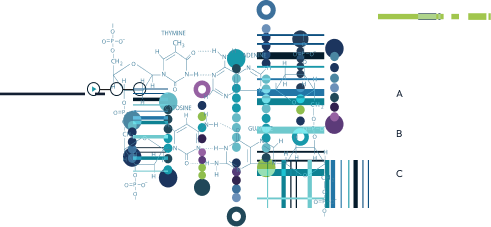News Center

Get to know the genes behind epilepsy
- By Variantyx, Inc
- Posted in Clinical Education
We’ve previously looked at examples of the spectrum of genetic seizure disorders: ranging from syndromes where seizures are the only symptoms (for example, GEFS+ and Dravet syndrome) to disorders that manifest with seizures along with additional features such as intellectual disability (for example, Fragile X syndrome and Rett syndrome).
We’ve also discussed how phenotypic overlap between different syndromes can complicate diagnosing a seizure disorder. And how a variety of inheritance patterns (including autosomal dominant, autosomal recessive, X-linked, de novo and mitochondrial mechanisms) across hundreds of potentially relevant genes further complicate matters.
Today we’re taking a look at some important epilepsy genes for which testing can be particularly tricky due to their propensity for deletion and/or duplication variants. It is for cases like these, among others, that a multigene panel which includes deletion/duplication analysis is most often the recommended testing approach for patients presenting with symptoms of a genetic seizure disorder. And it is why the selection of a test like Genomic Unity® Epilepsy Analysis with full del/dup coverage of the epilepsy genes being tested is so important.
SCN1A1
SCN1A seizure disorders
| Inheritance | Autosomal dominant |
| Proportion of causal del/dup variants | >25% |
| Clinical symptoms include |
KCNQ22
KCNQ2-related benign familial neonatal epilepsy (KCNQ2-BFNE), KCNQ2-related neonatal epileptic encephalopathy (KCNQ2-NEE)
| Inheritance | Autosomal dominant |
| Proportion of causal del/dup variants | Up to 40% |
| Clinical symptoms include | Associated focal motor and autonomic featuresFocal clonic activityNeonatal epilepsyNeonatal epileptic encephalopathyTonic or apneic episodesDevelopmental impairment |
STXBP13
Early-Infantile Epileptic Encephalopathy 4
| Inheritance | Autosomal dominant |
| Proportion of causal del/dup variants | ~17% |
| Clinical symptoms include | Generalized tonic-clonic, clonic, or tonic seizuresInfantile spasmsMyoclonic, focal, atonic, and absence seizuresMovement disorders (ataxia, dystonia)Behavior disorders (autism)Developmental impairment |
EPM2A4, NHLRC14
Progressive Myoclonus Epilepsy, Lafora Type
| Inheritance | Autosomal recessive |
| Proportion of causal del/dup variants | 10-15%, <10% |
| Clinical symptoms include | Focal occipital seizuresFragmentary, symmetric, or generalized myoclonusGeneralized seizures including tonic-clonic seizures, absence seizures or drop attacksMovement disorders (ataxia, spasticity, dysarthria)Behavioral deteriorationCognitive impairment |
Going one step further, Genomic Unity® Epilepsy Analysis additionally includes tandem repeat expansion analysis of the CSTB epilepsy gene which is causal for progressive myoclonic epilepsy type I as well as repeat expansion analysis of 4 loci which are causal for intellectual disability disorders that often present with seizures as a symptom: AFF2, DIB2B, FMR1.
CSTB5
Progressive Myoclonic Epilepsy Type 1
| Inheritance | Autosomal recessive |
| Proportion of causal repeat expansions | >90% |
| Clinical symptoms include | Stimulus-sensitive myoclonus seizuresTonic-clonic epileptic seizuresMovement disorders (ataxia, dysarthria) |
The longer a patient has uncontrolled seizures, the greater the likelihood that they will suffer irreparable brain damage. The ability to quickly arrive at a genetic cause of epilepsy through a comprehensive testing method such as Genomic Unity® Epilepsy Analysis can provide the information needed to control an individual’s seizures as soon as possible, allowing for better clinical management, prognosis and overall quality of life.
